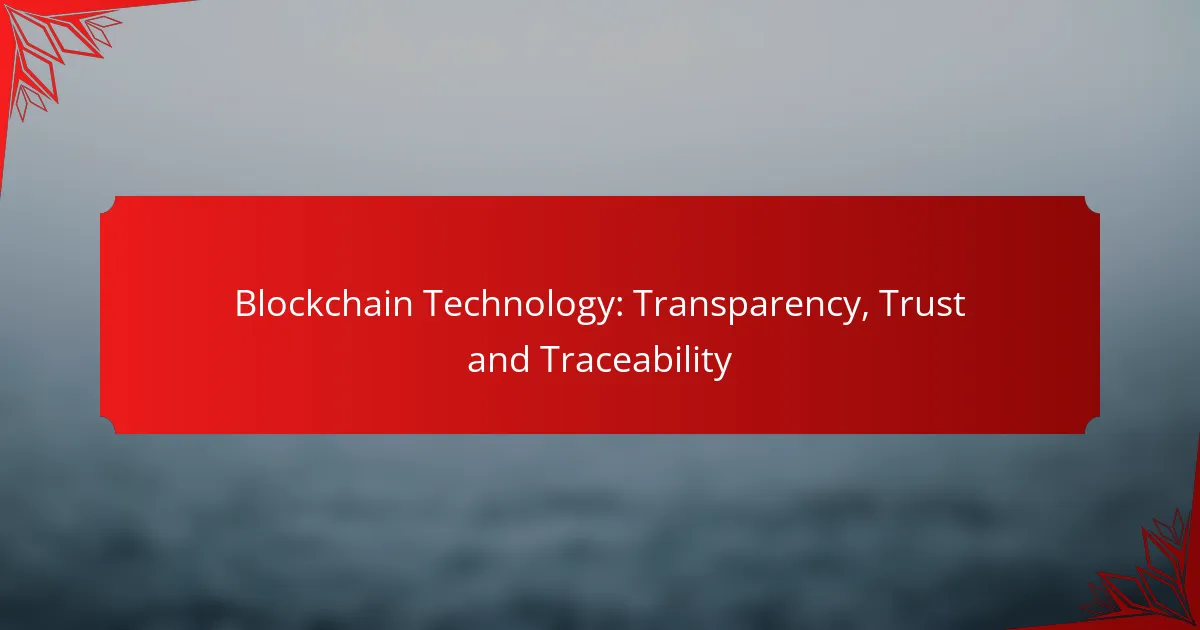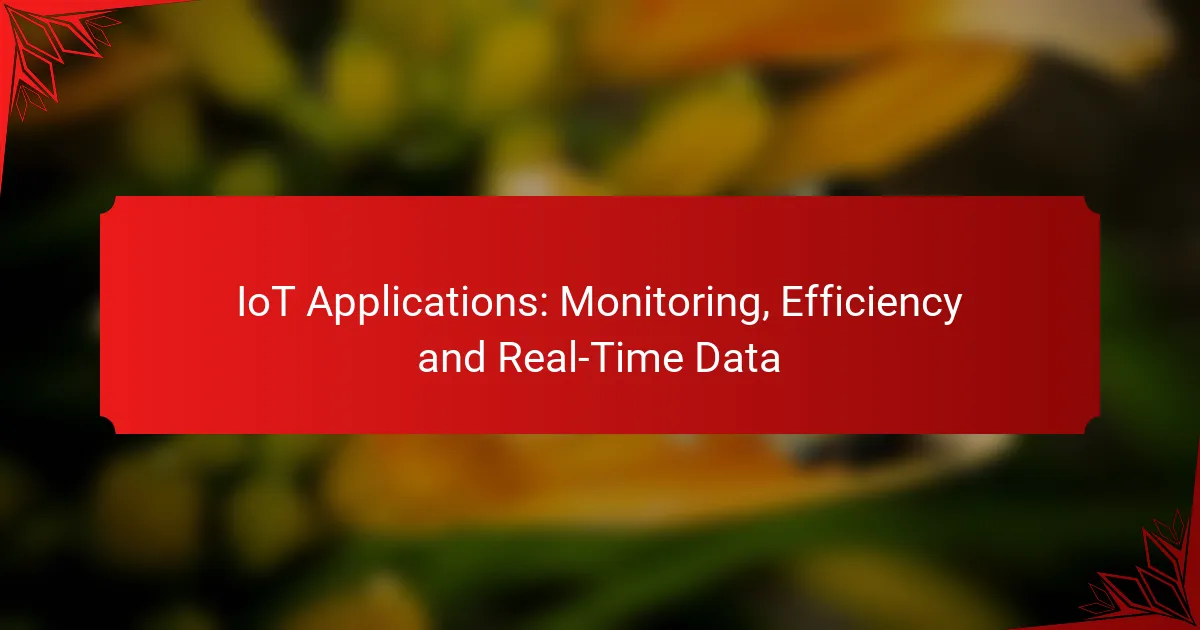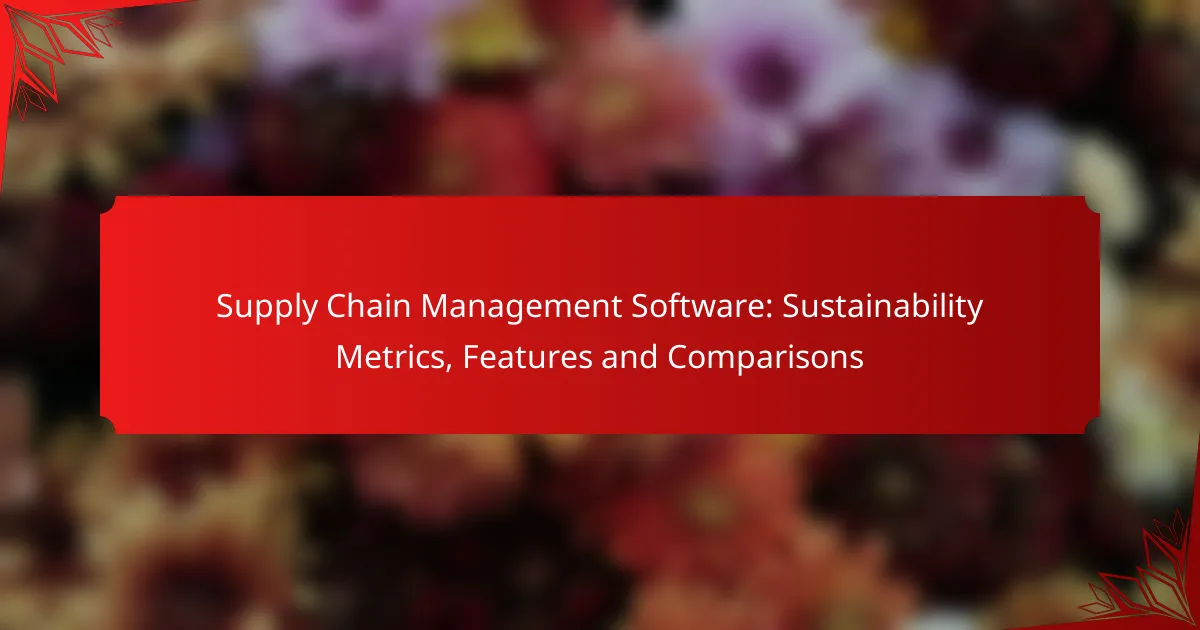Blockchain technology revolutionizes transparency, trust, and traceability in various sectors by offering a secure and immutable ledger for transactions. This decentralized system allows all participants to access consistent information, fostering confidence and accountability throughout supply chains. By enabling traceability, particularly in food safety, blockchain ensures that products can be tracked from origin to consumer, enhancing safety and trust in the marketplace.
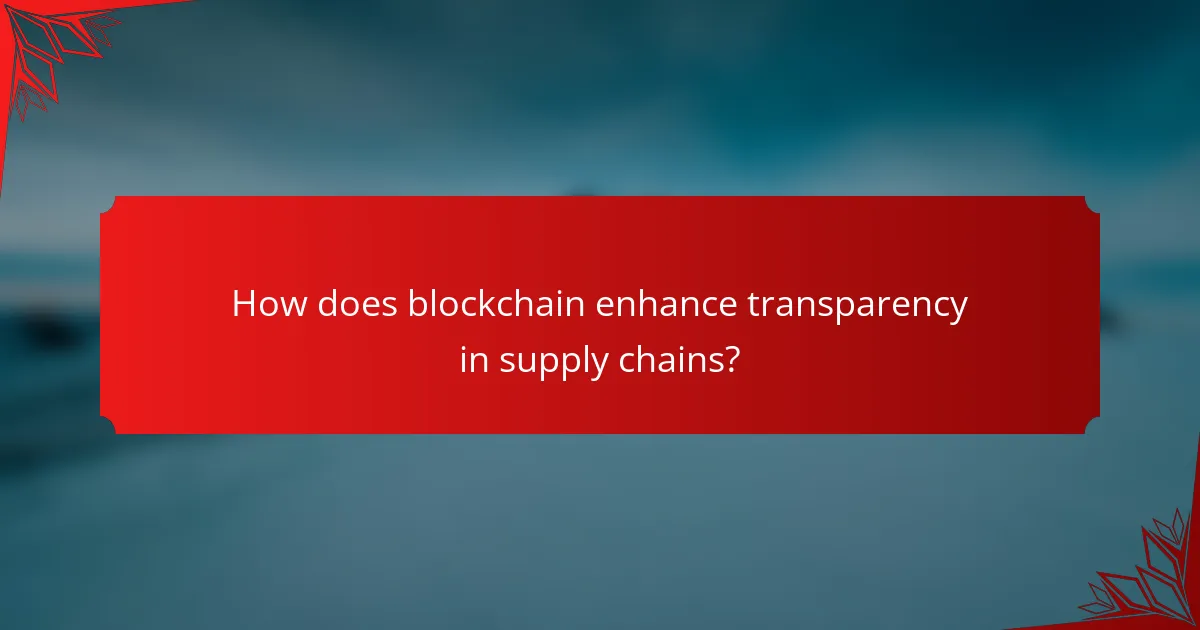
How does blockchain enhance transparency in supply chains?
Blockchain enhances transparency in supply chains by providing a secure, immutable ledger that records every transaction. This technology allows all parties involved to access the same information, ensuring that data is consistent and trustworthy.
Immutable records
Immutable records are a core feature of blockchain technology, meaning that once data is entered, it cannot be altered or deleted. This ensures that every transaction is permanently documented, which helps prevent fraud and errors. For example, if a product is recalled, the immutable record allows companies to trace back through the supply chain to identify the source of the issue quickly.
To maximize the benefits of immutable records, companies should implement blockchain solutions that comply with industry standards, ensuring that all participants in the supply chain can access and verify the same data.
Real-time tracking
Real-time tracking is made possible through blockchain’s ability to update records instantly as products move through the supply chain. This feature allows stakeholders to monitor the status and location of goods at any given moment, which can significantly reduce delays and improve inventory management. For instance, retailers can receive alerts when stock levels drop, allowing for timely reordering.
To effectively utilize real-time tracking, organizations should integrate IoT devices with blockchain systems, enabling automatic updates and reducing manual data entry errors.
Decentralized verification
Decentralized verification eliminates the need for a central authority by allowing multiple parties to validate transactions on the blockchain. This increases trust among stakeholders, as no single entity has control over the data. For example, suppliers, manufacturers, and retailers can all verify the authenticity of a product without relying on a third party.
To enhance decentralized verification, companies should engage all relevant parties in the blockchain network, ensuring that everyone has access to the same verified information, which fosters collaboration and accountability throughout the supply chain.
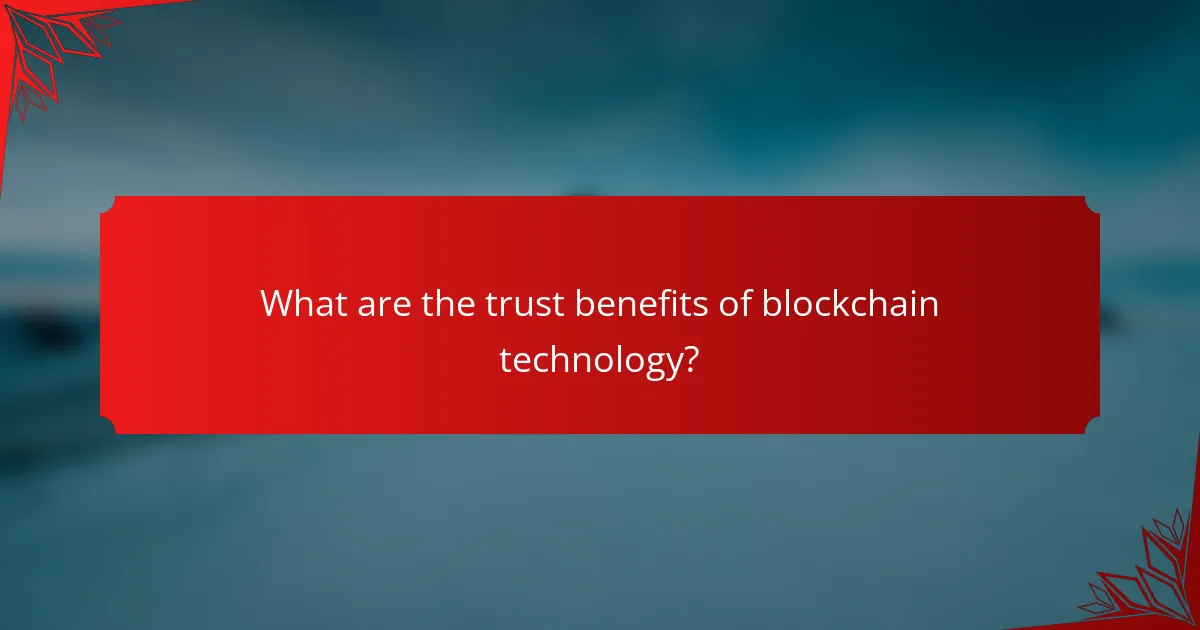
What are the trust benefits of blockchain technology?
Blockchain technology enhances trust by providing a decentralized and transparent system where all transactions are recorded and immutable. This ensures that participants can verify the authenticity of transactions without relying on a central authority, fostering confidence among users.
Smart contracts
Smart contracts are self-executing contracts with the terms of the agreement directly written into code. They automatically enforce and execute agreements when predetermined conditions are met, reducing the need for intermediaries and minimizing the risk of fraud. For example, in a real estate transaction, a smart contract can automatically transfer ownership once payment is confirmed.
Using smart contracts can streamline processes and reduce costs, but it is crucial to ensure that the code is secure and free of vulnerabilities. Testing and auditing smart contracts before deployment can help prevent costly mistakes.
Consensus mechanisms
Consensus mechanisms are protocols that ensure all participants in a blockchain network agree on the validity of transactions. Common methods include Proof of Work and Proof of Stake, each with its own strengths and weaknesses. For instance, Proof of Work requires significant computational power, while Proof of Stake relies on the amount of cryptocurrency held by participants.
Choosing the right consensus mechanism is vital for balancing security, speed, and energy efficiency. Organizations should consider their specific needs and the trade-offs associated with each method when implementing blockchain solutions.
Identity verification
Blockchain technology can enhance identity verification processes by providing a secure and tamper-proof way to store personal information. Users can control their own data and share it selectively, reducing the risk of identity theft and fraud. For example, digital identities on a blockchain can be used for secure online transactions without exposing sensitive information.
Implementing blockchain-based identity verification can streamline onboarding processes for businesses, but it is essential to comply with local regulations regarding data privacy and protection. Organizations should stay informed about relevant laws, such as the General Data Protection Regulation (GDPR) in the European Union, to ensure compliance while leveraging this technology.

How does blockchain ensure traceability in food safety?
Blockchain technology enhances traceability in food safety by creating an immutable record of every transaction and movement within the supply chain. This transparency allows stakeholders to track products from farm to table, ensuring accountability and safety.
End-to-end visibility
Blockchain provides end-to-end visibility by recording every step in the supply chain on a decentralized ledger. This means that all participants, from producers to retailers, can access real-time data about the status and location of food products. Such transparency helps identify bottlenecks and inefficiencies, ultimately improving overall supply chain management.
For example, a retailer can quickly verify the journey of a product, including its handling and storage conditions, which is crucial for maintaining quality and safety standards.
Product origin tracking
Product origin tracking is made possible through blockchain’s ability to store detailed information about where and how food items are produced. Each product can be linked to its source, including farm details, production methods, and processing facilities. This information is crucial for consumers who are increasingly concerned about the origins of their food.
For instance, if a consumer wants to know if their chicken is organic or free-range, they can scan a QR code that retrieves this information directly from the blockchain, ensuring authenticity.
Recall management
In the event of a food safety issue, blockchain facilitates efficient recall management by allowing companies to quickly identify affected products. With precise tracking capabilities, businesses can pinpoint the exact batches that need to be removed from shelves, minimizing health risks and financial losses.
For example, if a batch of lettuce is found to be contaminated, companies can trace its distribution and notify retailers and consumers within hours, significantly reducing the potential impact of the recall.

What industries benefit most from blockchain transparency?
Blockchain technology enhances transparency across various sectors by providing immutable records and real-time data sharing. Industries such as healthcare, finance, and logistics are particularly well-positioned to leverage these benefits for improved trust and traceability.
Healthcare
In healthcare, blockchain can securely store patient records, ensuring that data is accessible only to authorized personnel. This transparency helps reduce medical errors and enhances patient safety by providing a clear history of treatments and medications.
Additionally, blockchain can facilitate the tracking of pharmaceuticals, combating counterfeit drugs. By using blockchain, stakeholders can verify the authenticity of medications throughout the supply chain, ensuring that patients receive safe and effective treatments.
Finance
The finance sector benefits significantly from blockchain transparency, particularly in transactions and record-keeping. Blockchain allows for real-time settlement of transactions, reducing the need for intermediaries and minimizing the risk of fraud.
Moreover, blockchain can enhance compliance with regulations by providing a transparent audit trail. Financial institutions can easily track and verify transactions, which is crucial for adhering to anti-money laundering (AML) and know your customer (KYC) regulations.
Logistics
In logistics, blockchain improves transparency by enabling real-time tracking of goods as they move through the supply chain. This visibility helps companies optimize routes and reduce delays, ultimately leading to cost savings.
Furthermore, blockchain can enhance trust among supply chain partners by providing a tamper-proof record of transactions and movements. This transparency can lead to better collaboration and more efficient operations, as all parties have access to the same verified information.

What are the challenges of implementing blockchain technology?
Implementing blockchain technology presents several challenges that organizations must navigate to achieve transparency, trust, and traceability. Key issues include scalability, regulatory compliance, and integration with existing legacy systems.
Scalability issues
Scalability is a significant challenge for blockchain technology, as many existing networks struggle to handle a high volume of transactions efficiently. For instance, public blockchains like Bitcoin and Ethereum can process only a limited number of transactions per second, leading to delays and increased fees during peak times.
To address scalability, organizations may consider solutions such as layer-2 protocols, which operate on top of the main blockchain to enhance transaction throughput. Additionally, adopting newer blockchain platforms that utilize different consensus mechanisms, like proof of stake, can improve performance and reduce bottlenecks.
Regulatory compliance
Regulatory compliance poses another challenge for blockchain implementation, as laws and regulations surrounding cryptocurrencies and blockchain applications vary widely across jurisdictions. Organizations must ensure they adhere to local regulations regarding data protection, financial transactions, and anti-money laundering (AML) practices.
To navigate this landscape, businesses should engage with legal experts familiar with blockchain regulations in their operating regions. Staying informed about evolving regulations and participating in industry discussions can help organizations maintain compliance and avoid potential legal pitfalls.
Integration with legacy systems
Integrating blockchain technology with existing legacy systems can be complex and resource-intensive. Many organizations rely on outdated infrastructure that may not easily accommodate blockchain solutions, leading to potential disruptions in operations.
To facilitate a smoother integration process, organizations should conduct thorough assessments of their current systems and identify specific areas where blockchain can add value. A phased approach, starting with pilot projects or hybrid solutions, can help mitigate risks and allow for gradual adaptation to new technologies.
